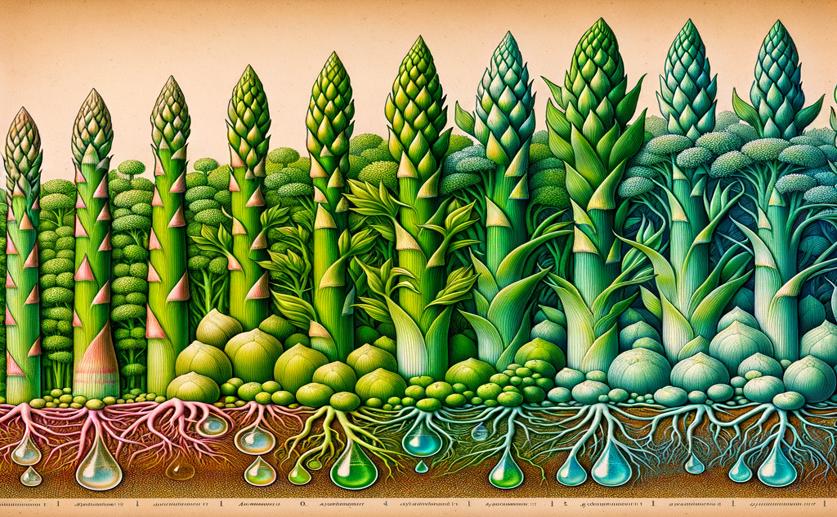
How Asparagus Plants React to Different Levels of Salt Stress: A Detailed Study
Jenn Hoskins
31st August, 2024

Image Source: Natural Science News, 2024
Key Findings
- The study by the Zhejiang Academy of Agricultural Sciences explored how Asparagus officinalis responds to salt stress
- Salt stress reduced plant height and weight, increased stress-related enzymes, and decreased chlorophyll, affecting photosynthesis
- The study identified 6,203 genes involved in salt stress response, highlighting key genes and pathways for future research to improve crop resilience
References
Main Study
1) Comprehensive transcriptome analysis of Asparagus officinalis in response to varying levels of salt stress.
Published 30th August, 2024
https://doi.org/10.1186/s12870-024-05540-4
Related Studies
2) Salt Stress Differentially Affects the Primary and Secondary Metabolism of Peppers (Capsicum annuum L.) According to the Genotype, Fruit Part, and Salinity Level.
3) Integrated metabolome, transcriptome analysis, and multi-flux full-length sequencing offer novel insights into the function of lignin biosynthesis as a Sesuvium portulacastrum response to salt stress.
4) Salt Response Analysis in Two Rice Cultivars at Seedling Stage.



 28th August, 2024 | Greg Howard
28th August, 2024 | Greg Howard